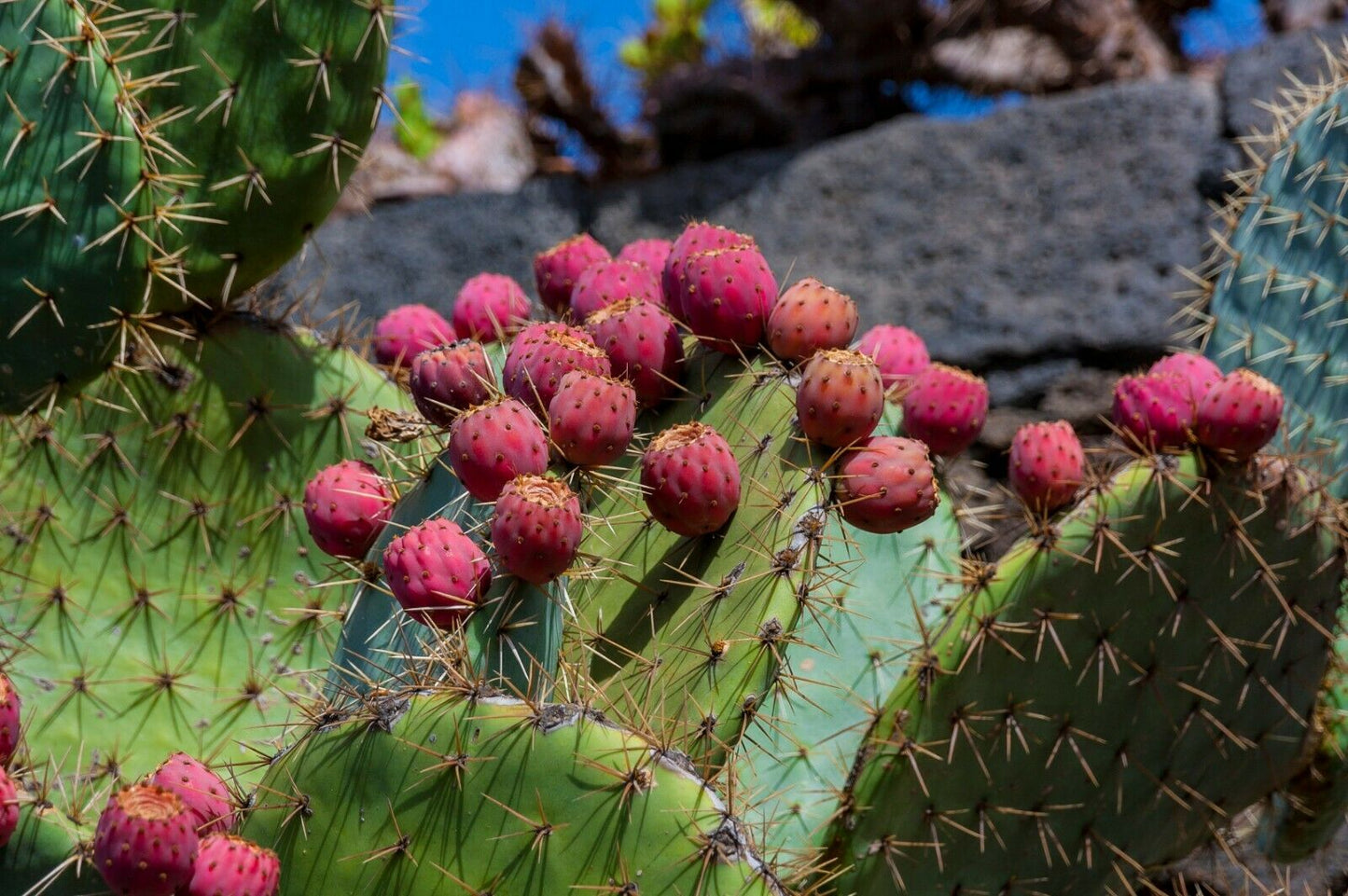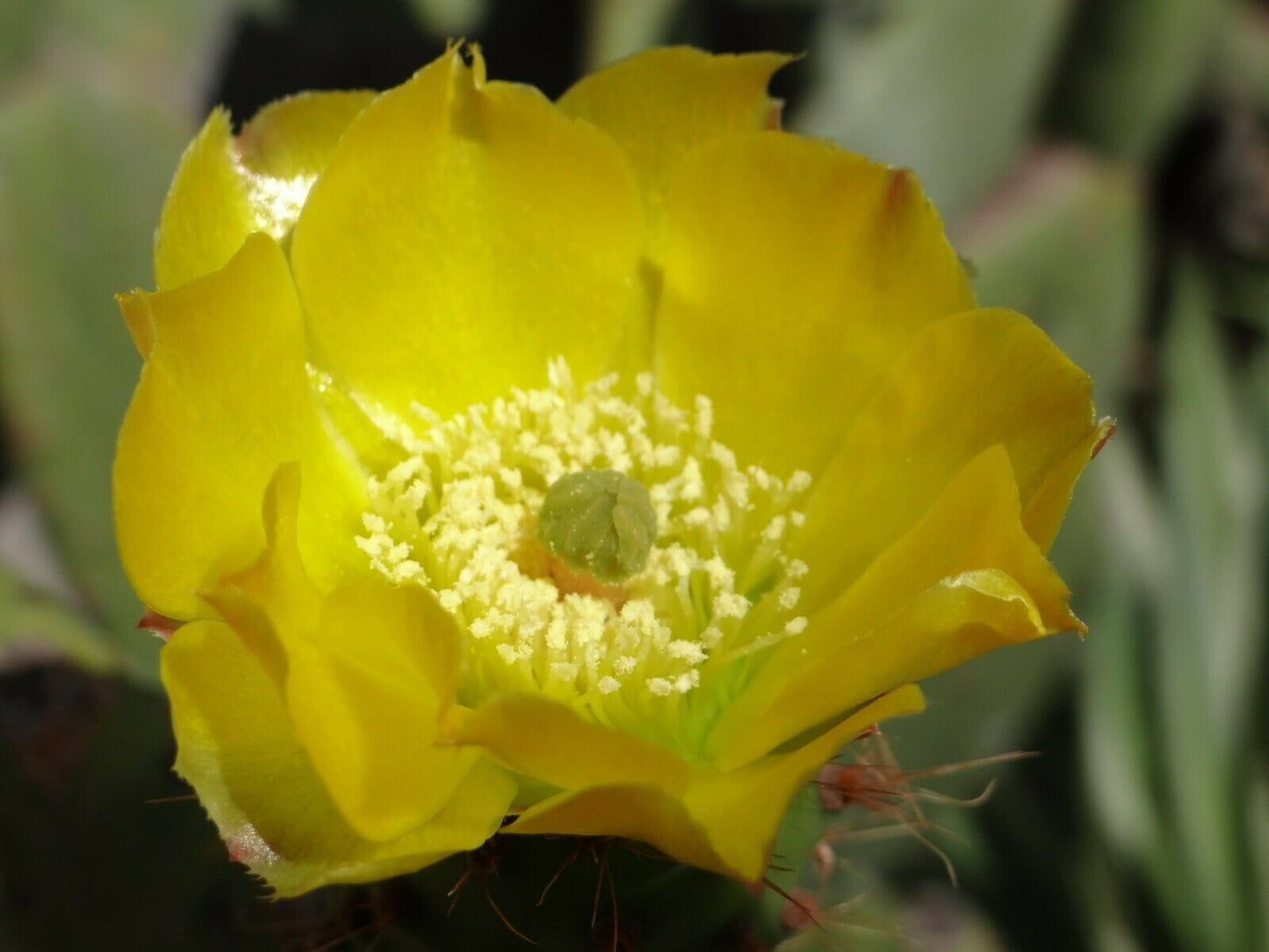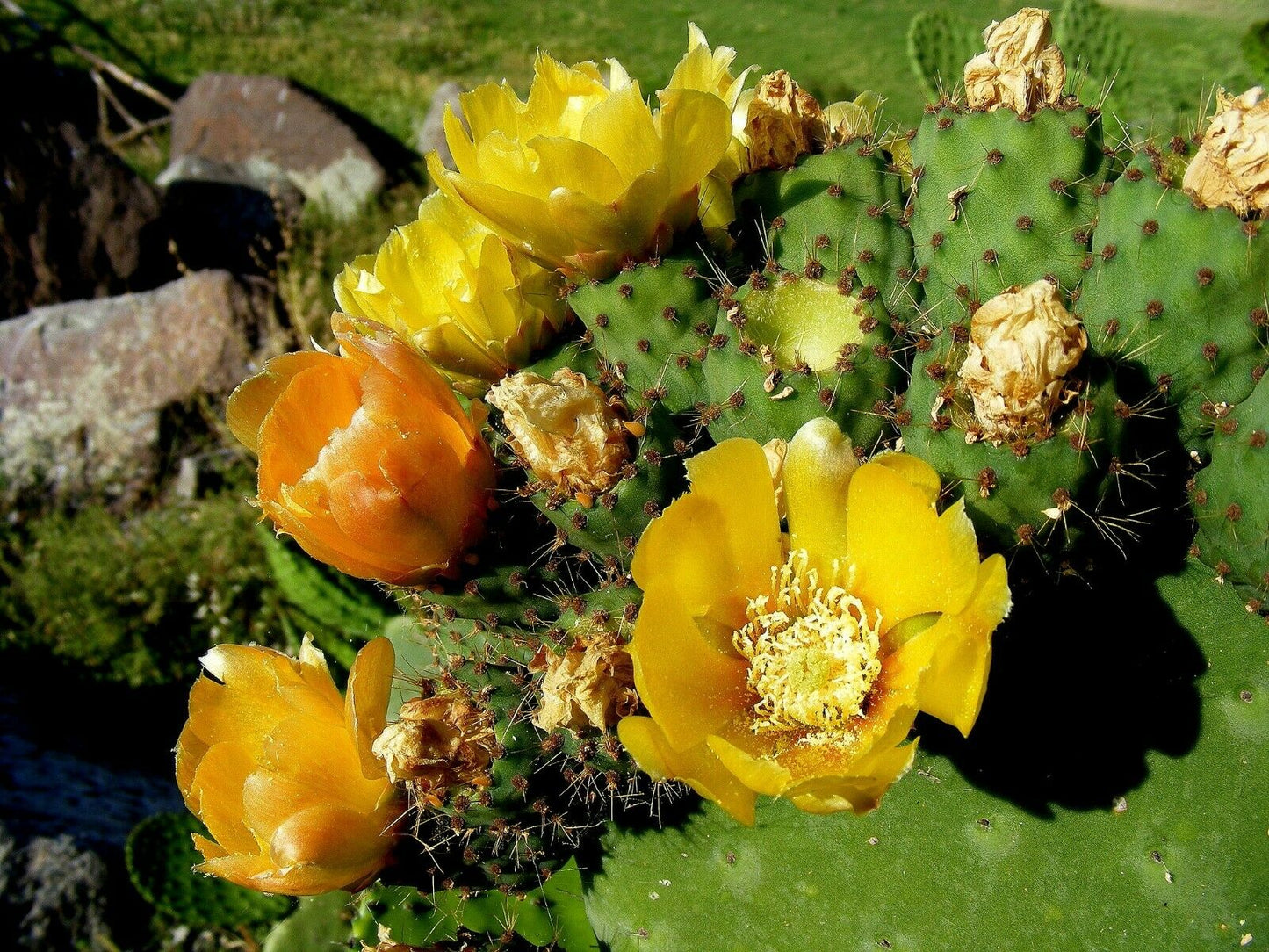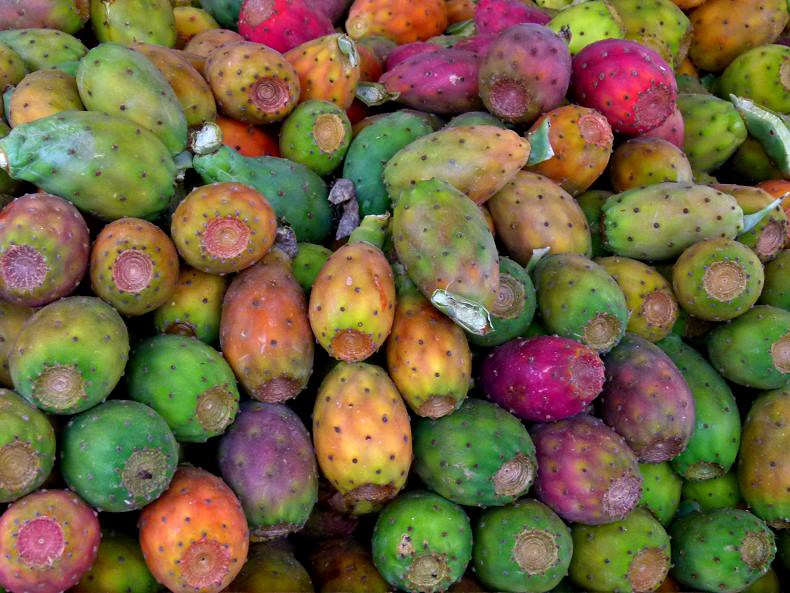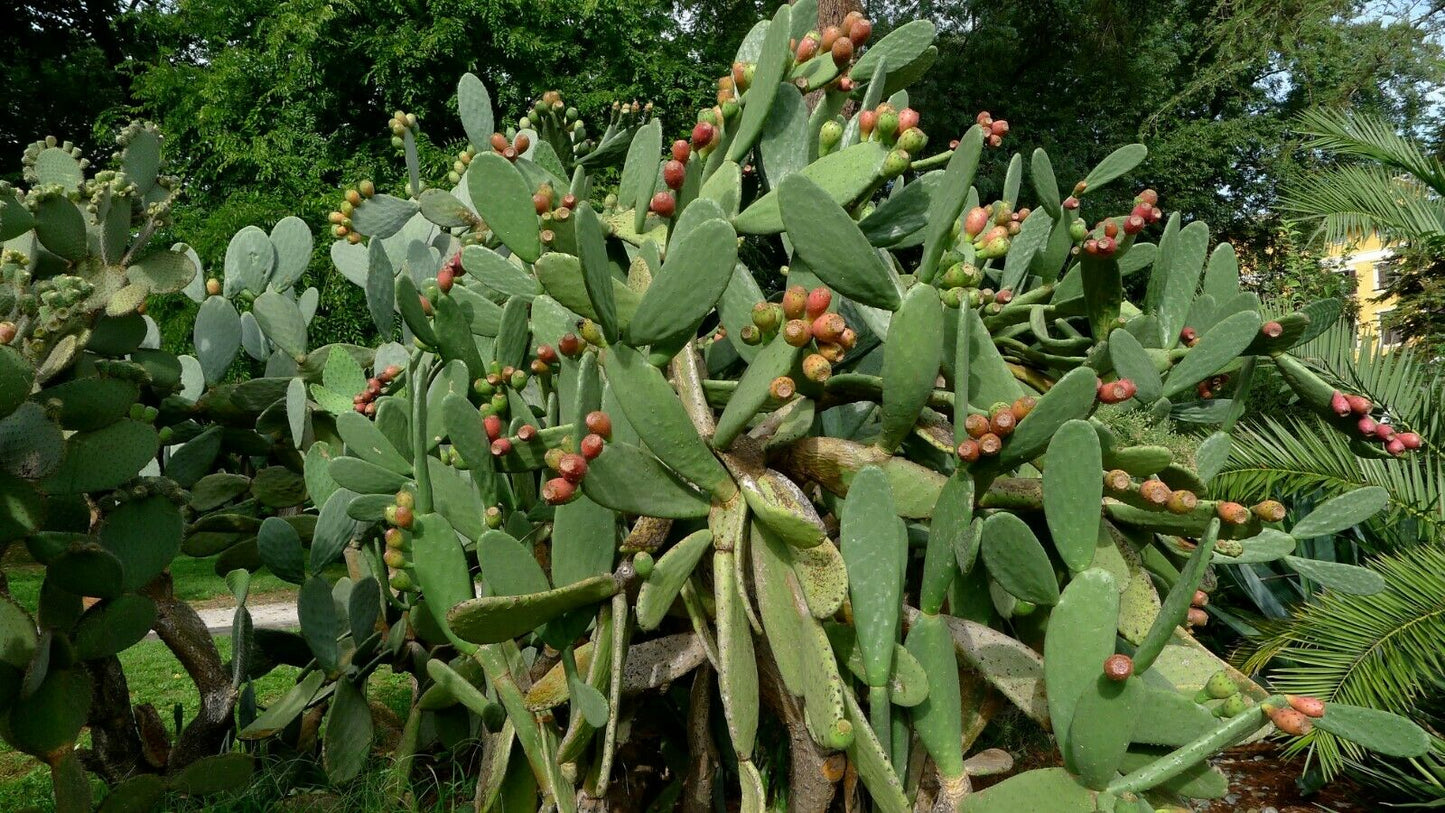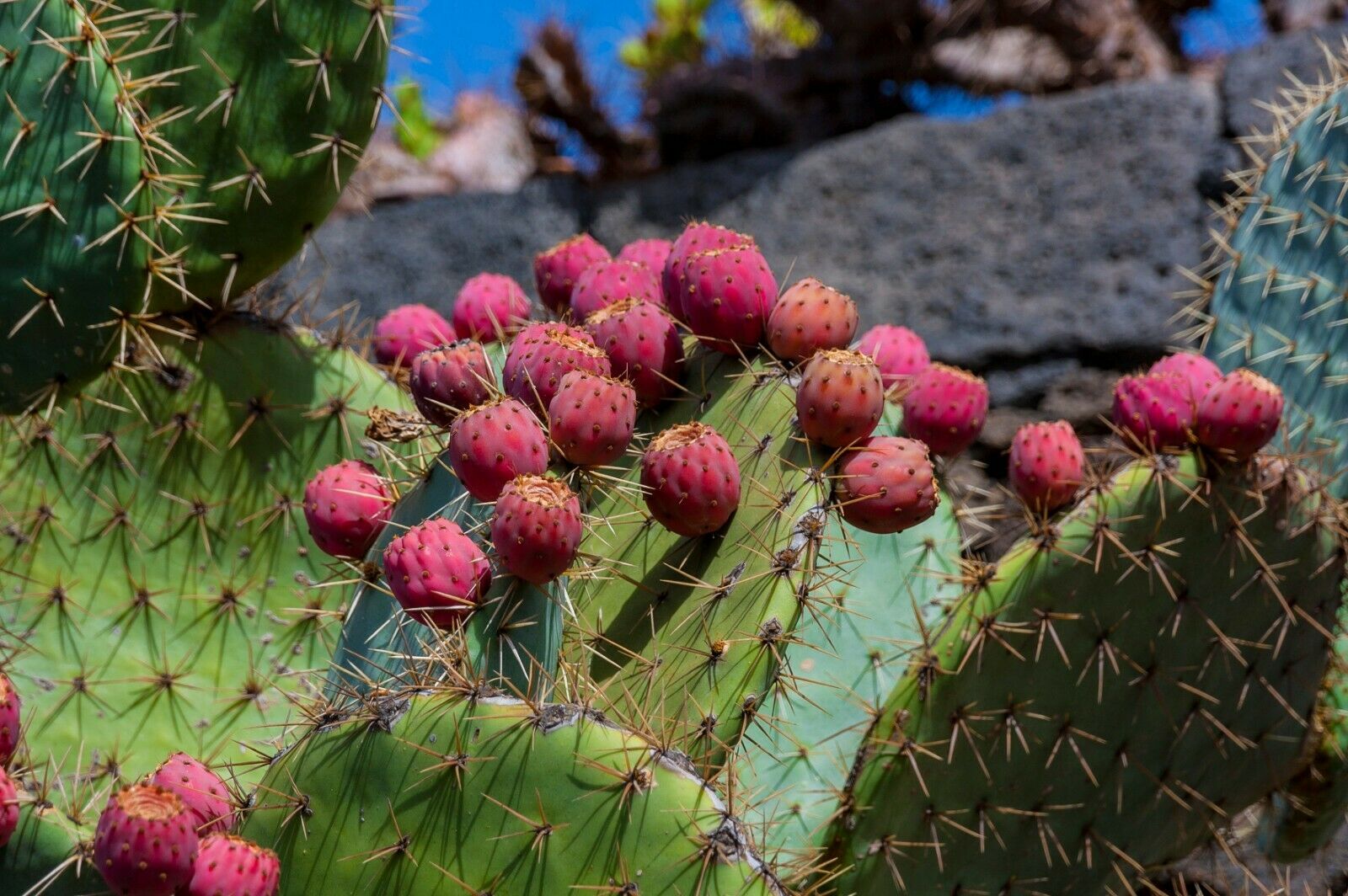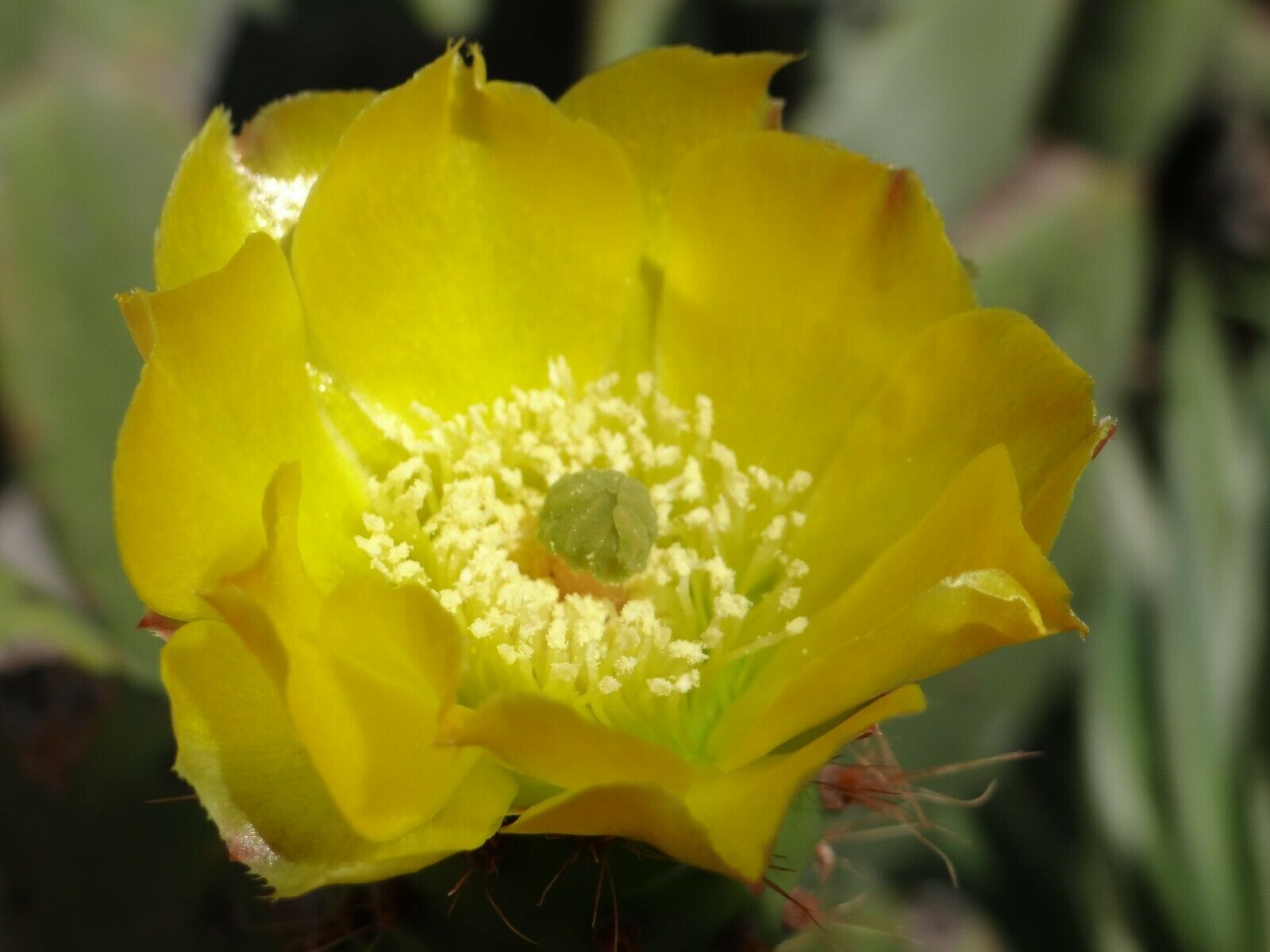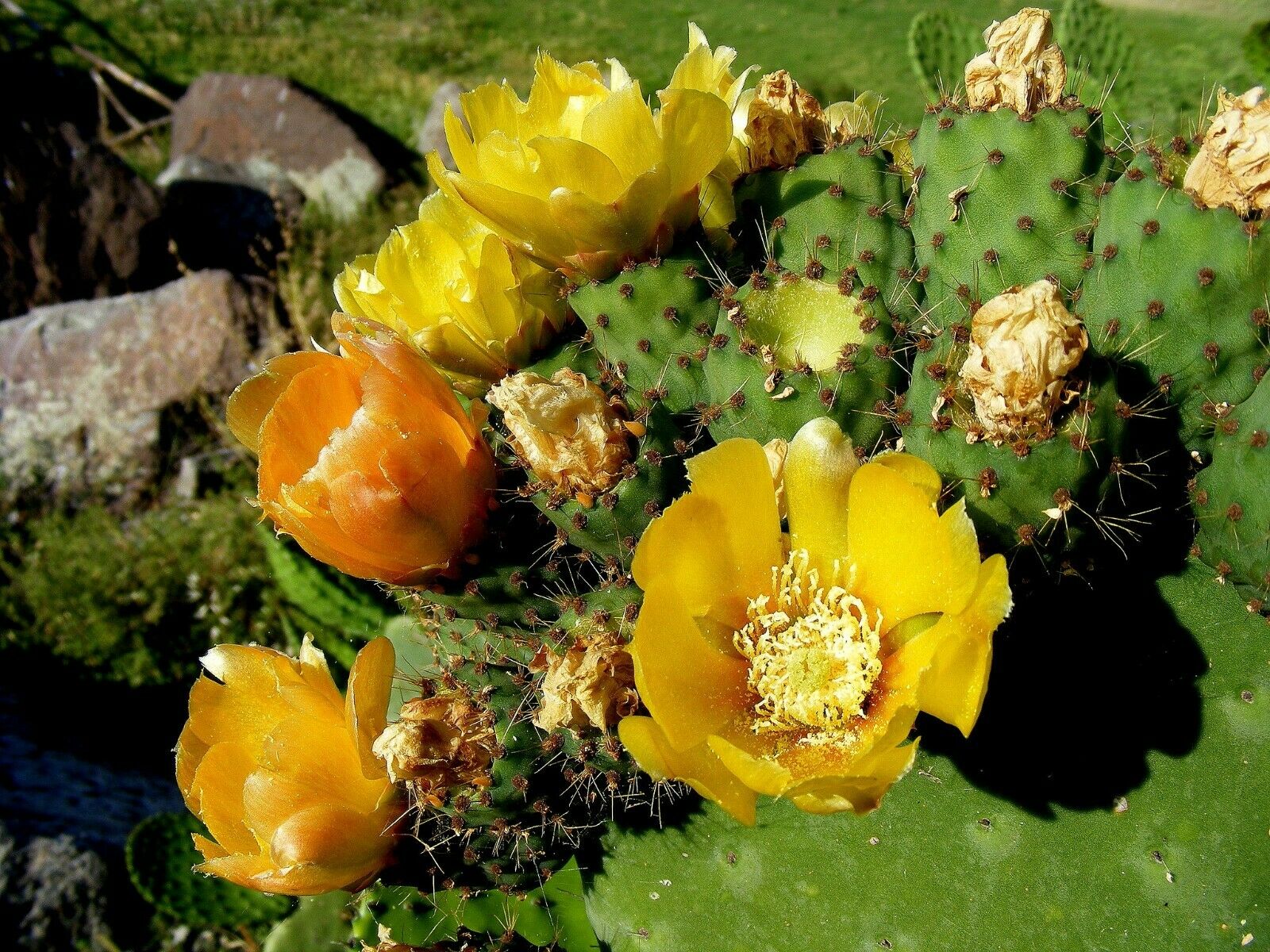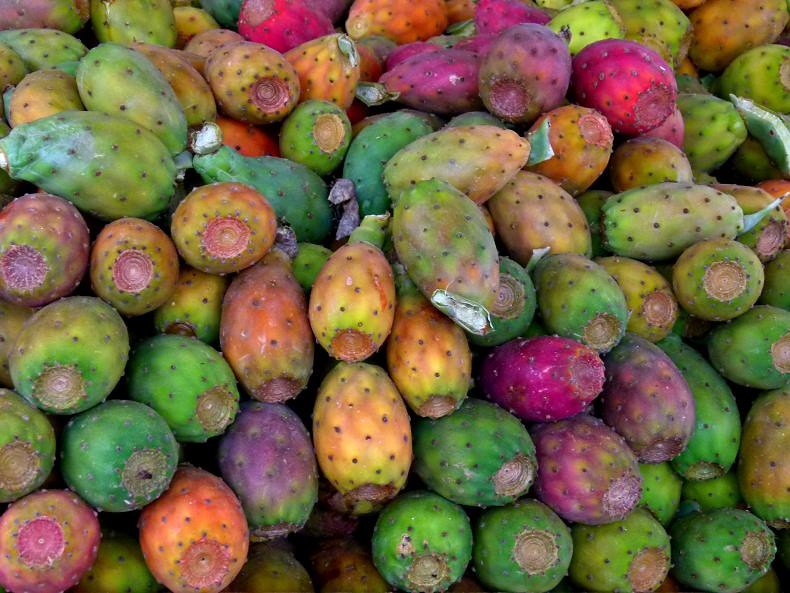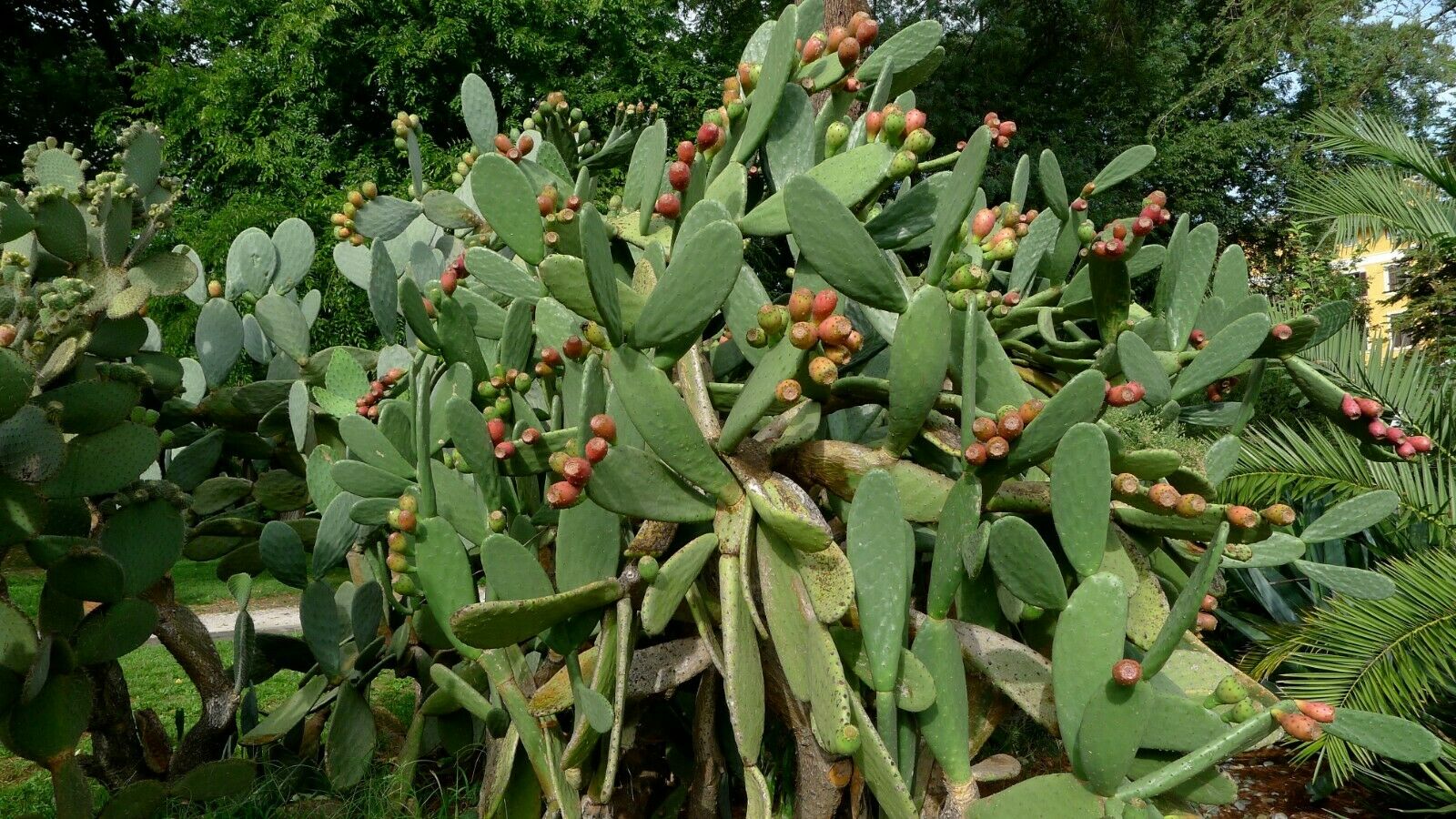Floridaseeds
Prickly Pear Opuntia ficus-indica 200 Seeds USA Company
Prickly Pear Opuntia ficus-indica 200 Seeds USA Company
Couldn't load pickup availability
Opuntia ficus-indica, commonly known as the prickly pear or nopal cactus, is a fascinating plant with diverse applications and significance in various cultures around the world. Here are some key points about Opuntia ficus-indica:
Botanical Description: Opuntia ficus-indica is a succulent plant with flat, oval-shaped pads (cladodes) that are typically green but can have purple or reddish hues. These pads are covered with spines and glochids, which are small, barbed bristles. The plant produces vibrant, colorful flowers that develop into edible fruits known as prickly pears or tuna.
Cultivation: Opuntia ficus-indica is well-suited to arid and semi-arid environments and can tolerate a wide range of soil types, including sandy, rocky, and poor soils. It's drought-tolerant and thrives in full sunlight. The plant is propagated through seeds, cuttings, or pads, and it can be grown both commercially and in home gardens.
Uses: Prickly pear fruits are a popular ingredient in culinary dishes and beverages in many regions, prized for their sweet, juicy flesh. They can be eaten fresh or used to make jams, jellies, candies, and beverages like juices and cocktails. The pads of Opuntia ficus-indica are also edible and are used in salads, stir-fries, and other dishes. Additionally, the plant has traditional medicinal uses and is believed to have various health benefits, including anti-inflammatory and antioxidant properties.
Commercial Applications: Opuntia ficus-indica has economic importance in several industries. In addition to its culinary uses, the plant is used in the production of cosmetics, pharmaceuticals, and dietary supplements. It's also utilized in soil erosion control and as a forage crop for livestock in some regions.
Cultural Significance: Opuntia ficus-indica has cultural significance in many parts of the world, particularly in Mexico and other Latin American countries where it is native. It plays a role in traditional cuisine, medicine, art, and folklore, and it's celebrated in festivals and ceremonies.
Growing Instructions
- Scarify the seeds by nicking or sanding the seed coat.
- Soak the seed in water for several hours.
- The seeds like moist, well-drained soil. Prepare a mixture of half potting soil and half sand, perlite or vermiculite. Put the soil in a pot. Water the mixture so that it is moist but not wet.
- Put the seeds on the soil.
- Cover the seeds with a thin layer of soil.
- Water the seeds.
- Place the pots in an area with warm temperatures in full sun or part shade.
- When the seedlings are a few inches tall, they can be transplanted.
Materials
Materials
Shipping & Returns
Shipping & Returns
Dimensions
Dimensions
Care Instructions
Care Instructions
Share
